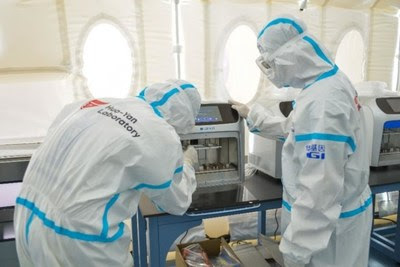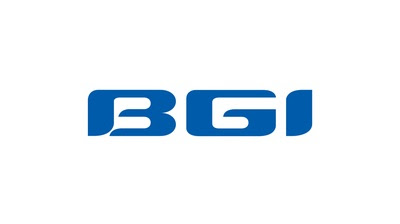NEW YORK, “Thank you, Mr. President and welcome to all members of the Executive Board.
“When I first walked into UNICEF House as Executive Director in January 2018, I knew millions of children in every corner of the globe were facing incredible challenges: violence, conflict, poverty, inequality, discrimination, and poor access to essential services.
“In the years since, these challenges have persisted and even intensified. Today we are confronted with a true child rights emergency in which COVID-19 and other crises are combining to deprive children of their health and wellbeing.
“Around the world, the pandemic is wreaking havoc on their young lives. Economic instability is disrupting essential services and making it harder for families to make ends meet.
“Primary and secondary schools remain shuttered in 19 countries, affecting over 156 million students. The first day of school – a landmark moment in the life of a child – has been indefinitely postponed for 140 million children globally.
“The number of children in child labour has risen to 160 million worldwide – an increase of 8.4 million children in the last four years.
“Meanwhile, the world’s worst humanitarian crises for children have further deteriorated over the course of this year.
“Even before the recent upheaval in Afghanistan, at least 10 million children across the country were dependent on humanitarian assistance to survive.
“Months of armed conflict across northern Ethiopia have placed 400,000 people, including at least 160,000 children, in famine-like conditions. We are projecting a 10-fold increase in the number of children who will suffer from life-threatening malnutrition in the Tigray region over the next 12 months.
“In Yemen, almost 21 million people, including more than 11 million children, need humanitarian assistance. More than 2 million children are malnourished and nearly 400,000 children under five suffering from severe acute malnutrition are at imminent risk of death.
“Away from the headlines, protracted emergencies in countries like Burkina Faso, Cameroon, the Democratic Republic of the Congo, Libya, Niger and Syria have also intensified, while the economic situation in Lebanon has continued to deteriorate.
“The number of climate-related disasters has tripled in the last 30 years, forcing people from their homes, driving food insecurity and water scarcity for millions. Approximately 1 billion children – nearly half of the world’s 2.2 billion children – live in one of the 33 countries classified as “extremely high-risk” to the impacts of climate change.
“Child displacement is also on the rise. An estimated 36 million children, more than ever before, are living in displacement due to conflict, violence and disaster.
“These are incredibly difficult times for the world’s children and young people. Some might even feel hopeless given the immensity of the challenges they face … Some might have doubts about where this world is headed and what their place will be in it.
“But that’s why UNICEF is here … to be THERE for them in their moment of greatest need and beyond to help them reach their full potential.
“I am hopeful because I have seen the tremendous resilience of children in the most difficult of circumstances.
“And I am hopeful because even in this darkest of years, the tireless dedication of the UNICEF team and our partners on the ground in countries around the world is making a difference.
“They are delivering immunizations, health care, clean water and nutrition. Providing education and protection services like counselling and safe spaces. And working with local authorities — and parties to conflict — to gain access to the most vulnerable children.
“These are the intelligent, courageous, inspirational people of our organization. People who walk the marbled halls of power and the dusty roads of the hardest to reach villages, carrying our message and delivering our mission for children.
“As our COVID-19 response has shown, UNICEF is resilient, agile and prepared to shift priorities at a moment’s notice, and to do so at a global, even historic scale.
“Despite the impact of the pandemic on the global economy, we are reaching an historic number of children and families.
“From the rapid delivery of water, tests, supplies and PPE to communities…to equipping and training healthcare workers to deliver the vaccines…to our central role in the COVAX facility, using our procurement, airfreight, and in-country delivery and training to help save lives in each country in the greatest vaccination drive in history.
“Beyond the COVID-19 response, last year we were able to reach 244 million children with services to prevent, screen and treat malnutrition. We kept lifesaving immunization campaigns up-and-running, provided education and tools for learning, installed safe water and sanitation systems, and registered the births of 21 million babies. We reached more than 130 million children with cash transfers across 93 countries, to help keep their families afloat during this devastating time.
“And we remain committed to stay and deliver in humanitarian emergencies, but also to plant the seeds of development in these emergencies, as part of our humanitarian and development mandates.
“We are also adapting our integrated areas of work.
“Through our Reimagine Education, Generation Unlimited and GIGA initiatives, we are working to address the global learning crisis and to both modernize curriculum and transform education by giving children and young people an equal platform and access to quality digital learning services. This means connecting all of these students – some 3.5 billion by 2030 – to world-class digital solutions for learning. And we are particularly keeping our eye on girls.
“Through GIGA, we have now mapped over 1 million schools and connected 5,000. With this data, we can craft compelling investment cases to build the necessary worldwide connectivity infrastructure.
“Together with ITU, we are proposing a $5 billion dollar donor-backed bond, to support last mile infrastructure and school connectivity. We have recently started conversations with interested Member States – and of course, would invite members of our Board and partners to find out how they can be involved.
“Through Generation Unlimited, we have a strong public-private youth partnership in 47 countries, rising to 60 by the end of the year – which aims to ensure that the largest generation of young people in history is prepared for the transition to work, making a livelihood, and engaged citizenship.
“Climate change is another example of our adapted work. Last month, we introduced the Children’s Climate Risk Index – the first comprehensive analysis of climate risk from a child’s perspective. This index will help UNICEF, our partners, and policy makers to better map climate-related vulnerabilities and inform our programming.
“To support the campaign to ensure water security for all, UNICEF has developed an index which combines data on drinking water access levels and water scarcity risks. This has helped to identify the 1.42 billion people, including the more than 450 million children, who are threatened by high water vulnerability.
“We are innovating and exploring new ways to support children and young people. From digital fundraising tools, to frugal innovations. We are seeking out the private sector and opening doors to a true cross-pollination of ideas and solutions, from children and young people themselves, technology companies, vaccine manufacturers, foundations and governments.
“In Darfur, for example, we are preventing diseases using hands-free hand washing devices made with low-cost salvaged materials. While in Cambodia, we are improving water quality and curbing the spreading of water-borne disease through clay water filters.
“Our collaboration with international financial institutions, foundations, corporations, governments AND individuals is reaching new heights — our work with the World Bank to deliver cash transfers to struggling families in Yemen is part of this collaborative effort, as is our partnership in Generation Unlimited with Microsoft on the Learning Passport, and the African Union on young people and vaccines.
“Our engagement with Private Sector Partners has intensified on all fronts in terms of income and influence, thanks to the dedication of our National Committees and Country Offices.
“And because all improvements start at home, we are constantly improving our organization. This includes strengthening our organizational culture and our core values of care, respect, integrity, trust and accountability. It also includes addressing systemic discrimination and ensuring a truly inclusive and diverse workforce and respectful workplace.
“UNICEF continues to actively implement and play a leading role in UN reform. We are more collaborative, effective and cost-efficient by tapping-in and joining up with our UN agency partners’ processes, partnerships, supplies and human resources.
“Yet as we take stock of how we have delivered for children, we must also look ahead. More children are in need than ever before and we have far more to do on their behalf. The expectations of both young people and UNICEF are changing. The adolescents and young people want to be more than voices and beneficiaries, they want to be a part of the change, participants in creating and implementing the solutions.
“This week you will be discussing our new Strategic Plan for 2022-2025.
“The Plan reflects all of what we have learned together over the last four years — including the hard-learned lessons of the COVID-19 pandemic — as we strive to help countries and communities rebuild, recover and strengthen all of the systems that support human development.
“The Plan reflects UNICEF’s universal mandate to reach all children, including those living in middle and high-income countries. It features gender and disability prominently across every aspect of our programming. This is in line with our commitment to the SDGs and the pledge to ‘leave no-one behind’.
“I know that there are different views on aspects of our Strategic Plan. We have heard your voices. While the Plan is not an inter-governmentally negotiated document, in its implementation we will continue our long-standing practice of agreeing on priorities with national governments, while always speaking out for the rights and wellbeing of children everywhere. I know you will all gather behind this Plan as it is carried out across our offices worldwide.
“In order to truly deliver on the next Strategic Plan, we need to have the right funding support. The pandemic has plainly shown the need for speed and scale. Flexible resources are critical to our ability to mount efficient and swift responses to sudden-onset emergencies and to provide countries and communities with effective support that builds their long-term resilience and future development.
“UNICEF is needed more than ever. Children and young people are looking to us to support them.
“Children keep our faith strong, because in them, we can see the future. We can open opportunities for them. We can involve millions of young people to be more than beneficiaries, they can be partners, working side-by-side with us on solutions.
“That is where our optimism comes from. Meeting children who have endured the worst of humanity opting instead to be part of the best of humanity.
“The UNICEF family represents the best of humanity, too. Our staff members, our National Committees, our dedicated Executive Board, our non-profit and business supporters, and our philanthropist partners worldwide — have exceeded my expectations at every turn.
“Being Executive Director has been a great privilege. I will never forget you, and I am deeply grateful for having the chance to work with, and learn from, all of you.
“I wish you and your families health, joy, peace and happiness in the years ahead.
Source: UN Children’s Fund


